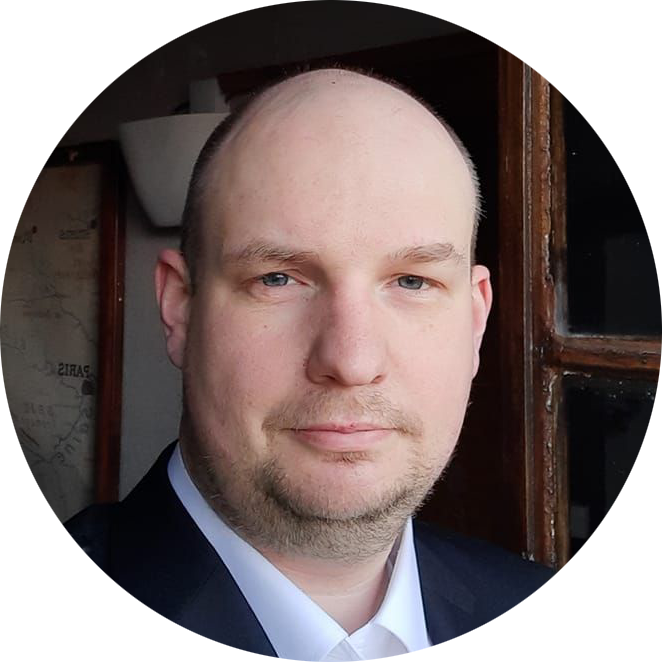On July 29, the Scientific Coalition for UAP studies (SCU) held its annual conference, bringing together over a hundred scientists united by their desire to shed light on unidentified anomalous phenomena (UAP), otherwise known as UFOs.
At the conference, Tim Gallaudet, former Admiral and Administrator of the National Oceanic and Atmospheric Administration (NOAA), an agency of the Department of Commerce responsible for atmospheric and marine studies, made some interesting statements about his experience of studying UAP. His statements were broadcast on September 29.
In his presentation, he explained that during the Go Fast case, the video of which was authenticated by the Defense Department in 2020, he was working for the commander of the Fleet Forces in charge of the UAP-disrupted Theodore Roosevelt aircraft carrier exercise. He described receiving an email through the Navy's secret internet system, addressed to him and 20 other commanders. His job at the time was to provide the weather reports used to schedule exercises. The email was entitled "Urgent Safety of Flight Issue" and read "If any of you know what this is, please tell me immediately, we are having multiple near mid air collisions with these and we may have to shut down the exercise". Attached to the email was the now famous Go Fast video. Even more astonishing: the next day, the email had been deleted from his computer and his subordinates, and no one spoke to him about it afterwards. Given the risk to flight safety - one of his prerogatives -, Gallaudet was surprised at the cover-up, noting that it would only be learned much later that UAP were already being investigated by a secret program.
Later, during a Q&A, he added that there was much more data on the Go Fast than has been shown to the public, and that generally speaking, the public has only seen the "tip of the iceberg" of what is at the Pentagon - including around what whistleblower David Grusch has been able to reveal. Regarding the Go Fast video, he said he believed the Navy's assessment that the object was anomalous.

The Hill and The House
On the July 26, 2023 hearings featuring David Grusch, Ryan Graves and Dave Fravor, which took place before the House Oversight Committee - where he himself was present - Gallaudet declared that he was well acquainted with the National Geo-Spatial Agency (NGA) where David Grusch worked, stating that his specialty was image analysis, and insisting that everything about Grusch was "absolutely legitimate", "of the utmost confidence", and that his "background really is beyond reproach".
He then defended Dr. Sean Kirkpatrick, the director of the All-Domain Anomaly Resolution Office (AARO), saying that he is limited by the authority of the Executive Branch : "NASA and the DoD are under the White House, and that's the Executive Branch, and so they are not going to say anything and do anything unless it's White House policy to disclose, and right now the White House is pretty much silent on it."
Regarding his own research efforts on UAP, he pointed out that his expertise concerns the maritime field, and that he was rightly challenged by the leak of documents appearing to show unidentified objects capable of passing from air to water and vice versa, referring to the case of the USS Omaha in July 2019.
On the detection of these Unidentified Submerged Objects (U.S.O.), he said he could only speak of one case, the data of which is secret, but existing. He claimed to have spoken to the witness himself, a U.S. Navy submariner, but that this was just one of many testimonies he's heard of as he'd just begun his search for witnesses.
He explained that he had contacted investor and underwater explorer Victor Vescovo, who had invested $50 million in an exploration boat equipped with the best sonar available. Vescovo had worked for NOAA with Tim Gallaudet to map the seabed. Learning that the explorer was organizing a campaign to test his new sonar in California waters, Gallaudet contacted him and offered to survey an area known to be visited by UAP, near Catalina Island. During that campaign, Victor Vescovo detected an underwater anomaly nicknamed "Rock Fall" by Tim Gallaudet:
“This one area that we call the “rockfall” is blown up right here. There's an undersea ridge and there's a big section of it that's carved out of it and displaced. I've talked to some world leading geologists and undersea mappers; one of them is Larry Mayer at the University of New Hampshire, and he performed the analysis for me. The distance from that displaced section to the ridge is 2 kilometers, and the total height of that object is about I think 100 meters, and I can't find an explanation for this”
The next step for the team will be to bring down optical equipment so that they can observe on site if there's anything of interest.

The Ocean
Another part of Gallaudet’s research has taken place with the Ocean Studies Board (OSB), where he proposed a comprehensive survey of the ocean floor, which was approved. He was advised to speak to the Naval Studies Board (NSB) to gain access to classified data, which he did. He was surprised to learn that former US Navy chief and NSB boss Gary Roughead supported his research and wanted to take it on himself.
He later added that he was in discussion with private companies specializing in the deployment of sensors to observe what was going on in the oceans and take a close look at hotspots, so that more precise measurement campaigns could be carried out.
He concluded his presentation with the staggering potential of UAP research, proposing that it could trigger a technological revolution that would dwarf industrialization.
Translated from French by Guillaume Fournier Airaud
Main picture: Ministry of Commerce / 12019 for Pixabay


